Poetry in Motion: Bronc Riding in Montana

Bronc riding, also known as saddle bronc or bareback, has a rich history dating back to the mid-1800s when cowboys would break horses for the United States Army in Wyoming and Colorado.
As rodeos started to emerge, cowboys added a component of competition to it, and in 1901 the first bronc riding event took place. From that point on the sport has grown with rules and regulations in place for both the horses’ well-being and the riders’. It is now one of the most popular events to watch at a rodeo.
For me there has always been something intriguing about going to a rodeo and watching the rider and the horse merge into one. I wanted to know what it is like to try and stay on a 1,300-pound horse for eight seconds. Getting on one for this assignment didn’t seem practical or smart, so I did the next best thing. I went to a rodeo in Ennis, Montana.
How do you put into words what is going through a rodeo cowboy’s mind? The simple answer would be that you can’t unless you step into their cowboy boots, so to speak. But, by observing and listening, you can get a sense of it, and that takes patience.
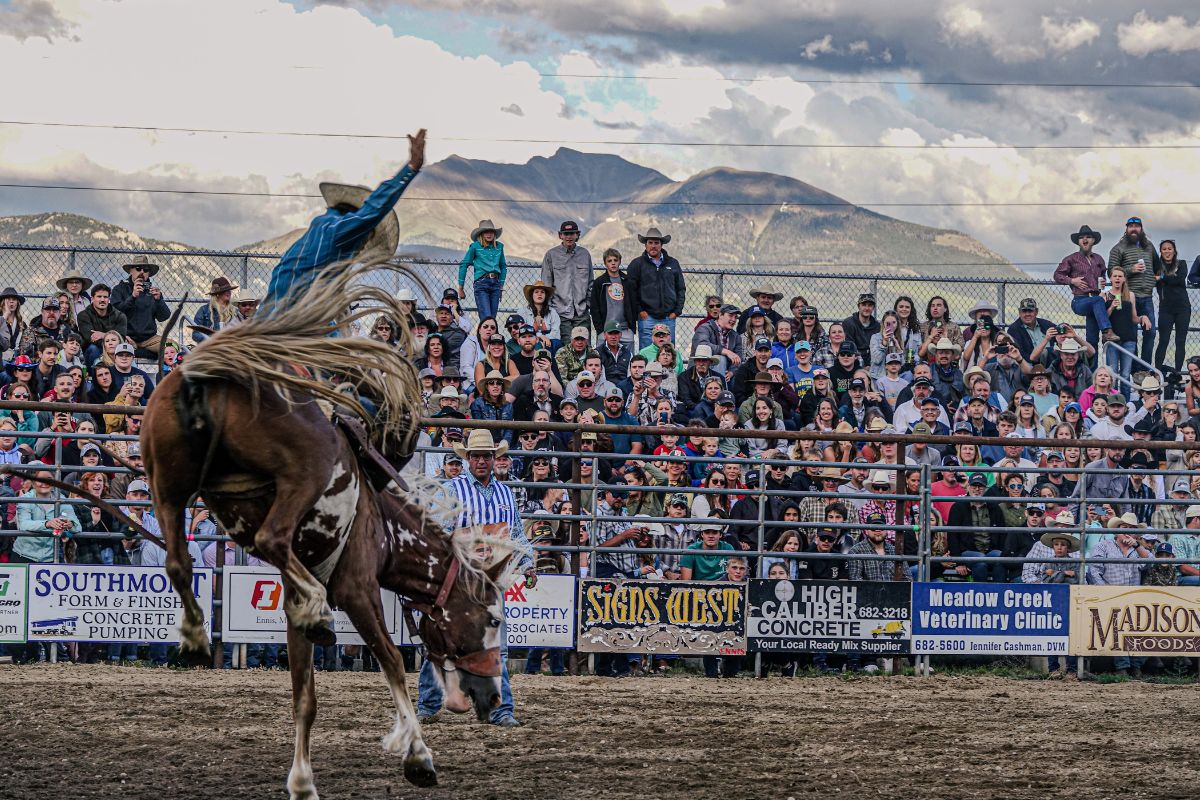
As I stepped timidly behind the chutes and into their world, I felt completely out of place with my camera strapped to my side. They watched me as I stumbled about trying to find the right way to ask if I could take their photograph as they prepared to ride. Luckily, the rodeo clown helped me by breaking the ice, and I was able to relax and get into my element.
I watched them. Deep concentration furrowed their brows as they wrapped their hands with tape, closed their eyes and went through the side to side and back and forth motions of being in the saddle while it was still firmly planted on the ground, trying to gauge what a horse will do without being on it.
Each rider had style and flair for their attire. There was artistry that went into it. Leather chaps that were inlaid with flowers, initials, adorned with silvers or bright hues that shined with their movements. Cowboy boots so worn out they were barely wearable but had spurs that the sun glinted off etched with the finest filigree. Button-down shirts tucked into faded Wranglers and a cowboy hat that was custom fit. They were proud to show me their gear and laid it out for me to photograph, and smiled as they talked about it. It was well-worn and loved. As the announcer yelled out that it was about time to start the bronc riding portion of the rodeo, I noted a change in the atmosphere around me. As the horses were placed in the bucking chutes, nostrils flaring, muscles twitching and trying to kick their way out, the riders mentally began their process of preparing for the ride.
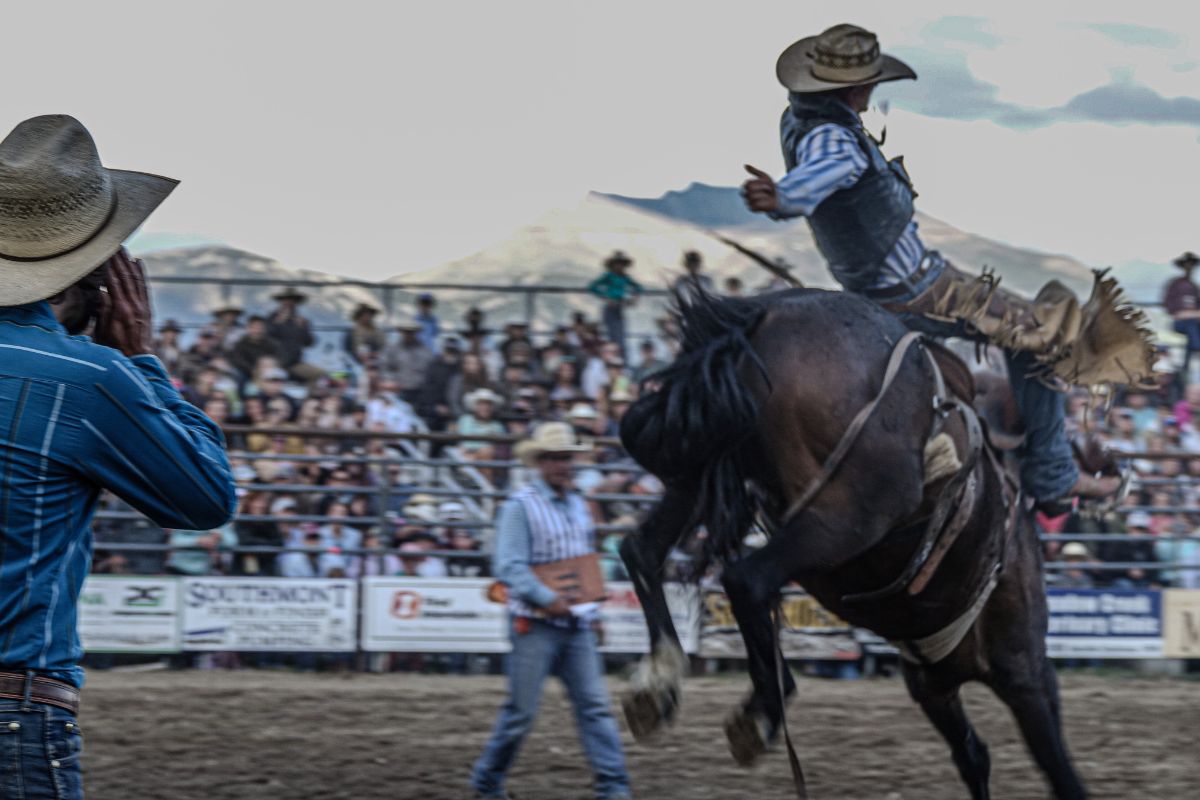
Some prayed right before getting on the horse they drew, while others would get in the saddle and smack the side of their own face. With a loud thunk, the metal gate would open, and as the horse started to kick, buck and twist, I watched as rider and horse merged into one and got into sync with each other.
 Other cowboys would cheer them on and yell out encouraging words. Eight seconds seemed so quick standing behind the chute, and the process would start over with another rider and horse.
Other cowboys would cheer them on and yell out encouraging words. Eight seconds seemed so quick standing behind the chute, and the process would start over with another rider and horse.
A friend of mine knows a bronc rider by the name of Ty Fischer who agreed to be interviewed. Ty is new to the sport, and he told me, “I bit down and started bronc riding at the age of 50, so I am not your typical bronc rider.”
Ty grew up in a family that put the money they had into breaking young horses into great older horses. He told me, “I learned as a young man to have patience with a young horse, but loved when they got a little 'broncy' [read: bucked]. I rodeoed in high school, college, and some pro rodeos as a calf roper and bulldogger. I am truly blessed to have had the parents that I have, they imparted all the real lessons of life to me and my brother through horses and being a horseman.”
Ty then told me a story that had us both laughing, about when he was interested in getting into the military and the Army said they had a rodeo team. He joined because of that, but when he asked where the rodeo team was, they looked at him baffled and said there wasn’t one.
He said, “I am still looking for that rodeo team.”
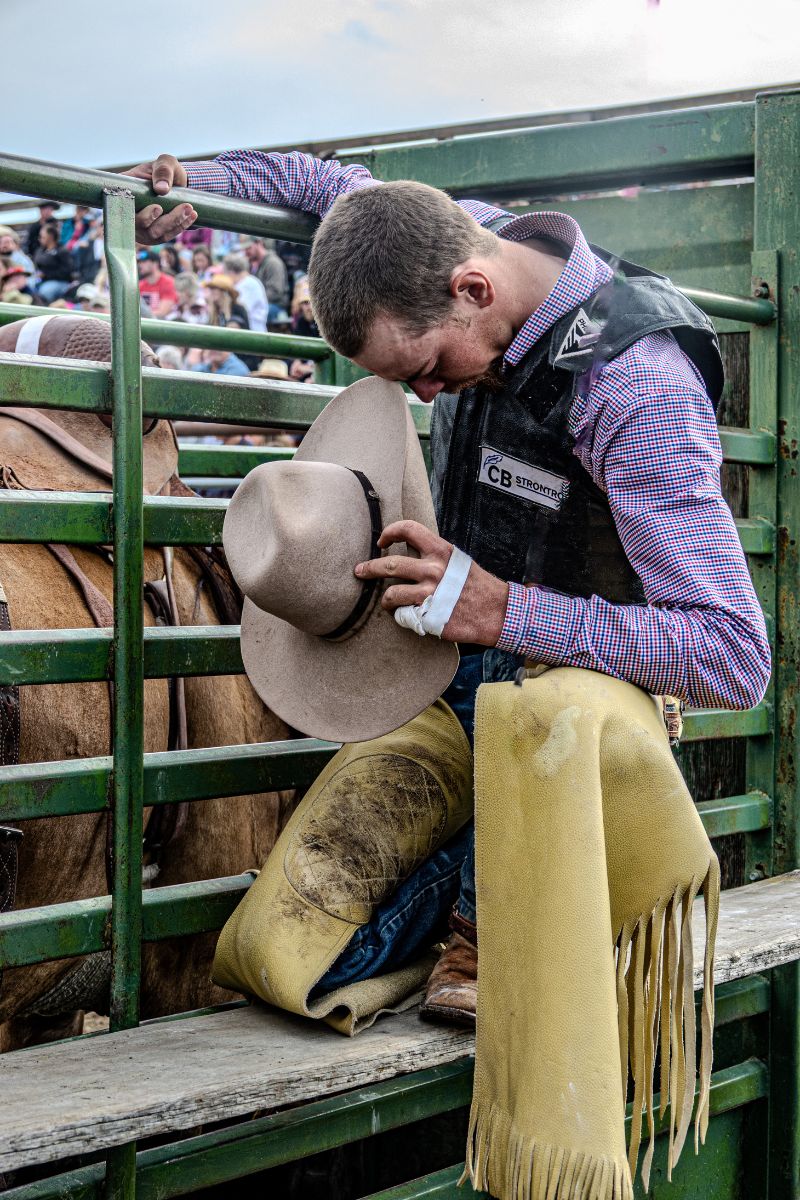 Ty’s title in the military is Sergeant Major (SGM), and he is set to fully retire in July. Ty let me know that saddle bronc has given him something to look forward to after retirement. His son Rowdy told him he wanted to try saddle bronc riding a couple of years ago and said, “I guess the cowboy lifestyle is just in our 'jeans.' I am so very happy to not only be supporting him but riding alongside him.” He said bronc riding lets him know he still has a fight left in him; he didn’t want to sit by and watch his son ride broncs and live vicariously through him.
Ty’s title in the military is Sergeant Major (SGM), and he is set to fully retire in July. Ty let me know that saddle bronc has given him something to look forward to after retirement. His son Rowdy told him he wanted to try saddle bronc riding a couple of years ago and said, “I guess the cowboy lifestyle is just in our 'jeans.' I am so very happy to not only be supporting him but riding alongside him.” He said bronc riding lets him know he still has a fight left in him; he didn’t want to sit by and watch his son ride broncs and live vicariously through him.
Ty is mentored by Tom Reeves from Eagle Butte, South Dakota, who also coaches him, and is a friend. He and his wife Casey run a program called Building Champions that focuses on helping grow bronc riders and helping young boys and men along their journey of life. Ty said that bronc riding is poetry in motion. When you go out there, you aren’t fighting the horse but yourself. You want to move with the horse and get in time with the horse, so the fight is internal.
He explained that when he draws a horse and goes to the pens to identify him, the ride is beginning. Prepping the gear, visualizing a solid mark out, and being in time with the bronc; as Tom would say, "Keep your chin down, lift your buck rein, and set your feet."
Ty told me that when his bronc gets loaded in the chute, he can feel the energy in the air:
"For me it's about keeping that energy focused, not erratic, as horses feel and feed off your energy. When it's time to tighten my cinches and grab my buck rein, my focus narrows and I am visualizing my best outcome. The moment you see a bronc rider step over the chute and put his boot on his saddle, he is transferring his weight to the bronc and saying, 'Hello, big guy, let's do this.' All the preparation is done and when I nod my head there is no more nervous energy, just focus and try. Currently, for me it's a fight for every jump! Eight seconds in everyday life is so fast that it's dismissed by most and it is hard for most to understand. Most think that horse is just bucking a little without realizing that a 1,300-pound bronc is bred to be an extreme athlete to deliver all his power at every jump. I know that with every hour of training and every bronc I ride, I will begin to see and feel more during each of my rides.”
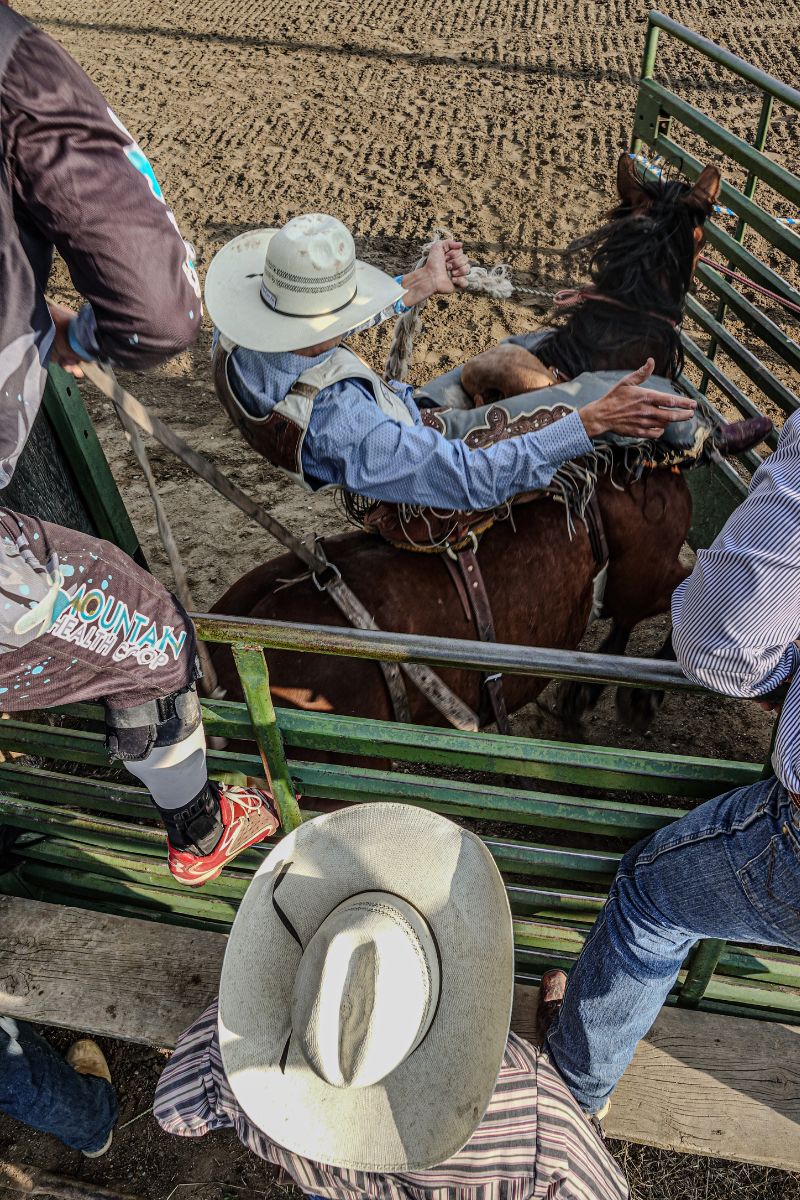
Bronc riding is about controlling your emotions while learning about yourself and the horse you draw. Ty feels a sense of accomplishment and purpose, and said most who ride bronc do. There is a strong community that is supportive and will help you to be the best bronc rider you can be. Ty is thankful for that. Bronc riding, and his passion for it, make Ty feel whole.
At the end of our conversation, Ty said, “I've walked this path many times in my career and I'm smiling through the buck offs and mild pain because I know what being disciplined will lead to. Not to mention I'm thankful to be able to walk this path at nearly 51.”
Bronc riding might have evolved over the years from its early days, but the bond between cowboy and horse remains the same. When the chute opens and I watch the cowboy and horse merge, I can now understand a fraction more of what I did not before. Ty’s words will run through my mind: “Watching a horse and cowboy together is poetry in motion.”
Let ’er buck.
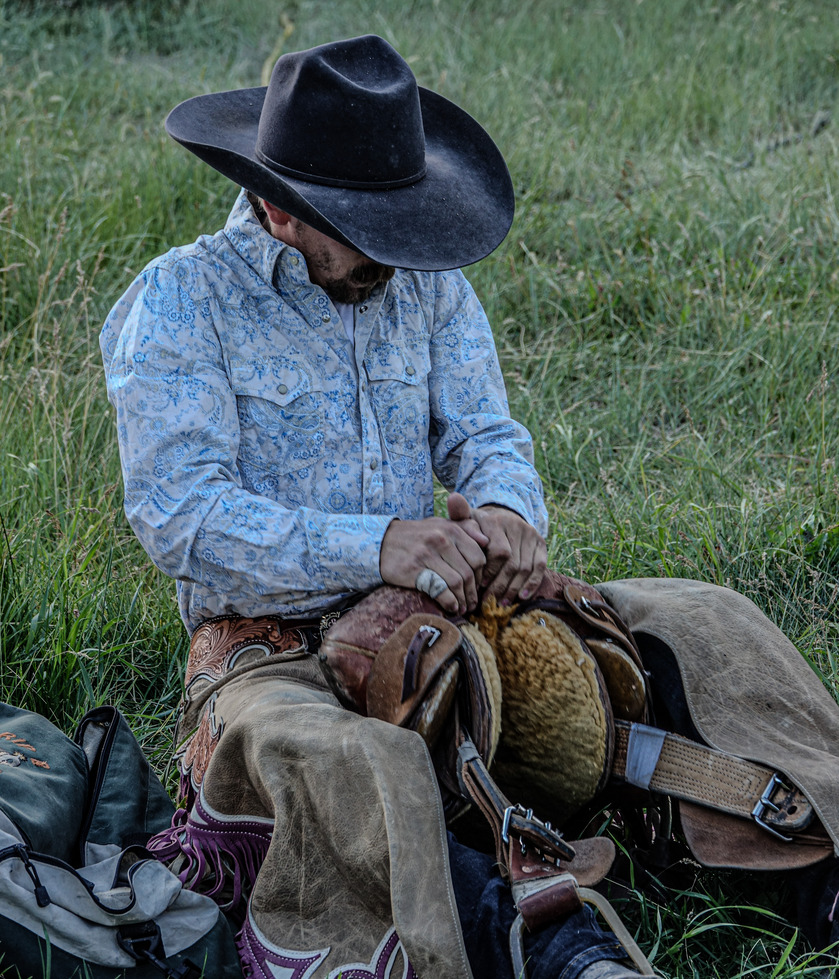
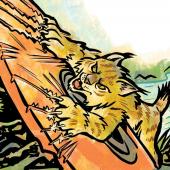

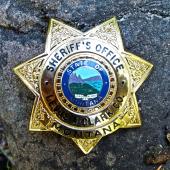

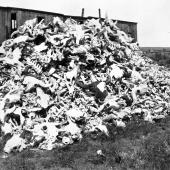
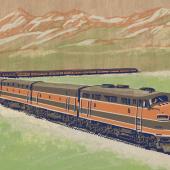






Leave a Comment Here